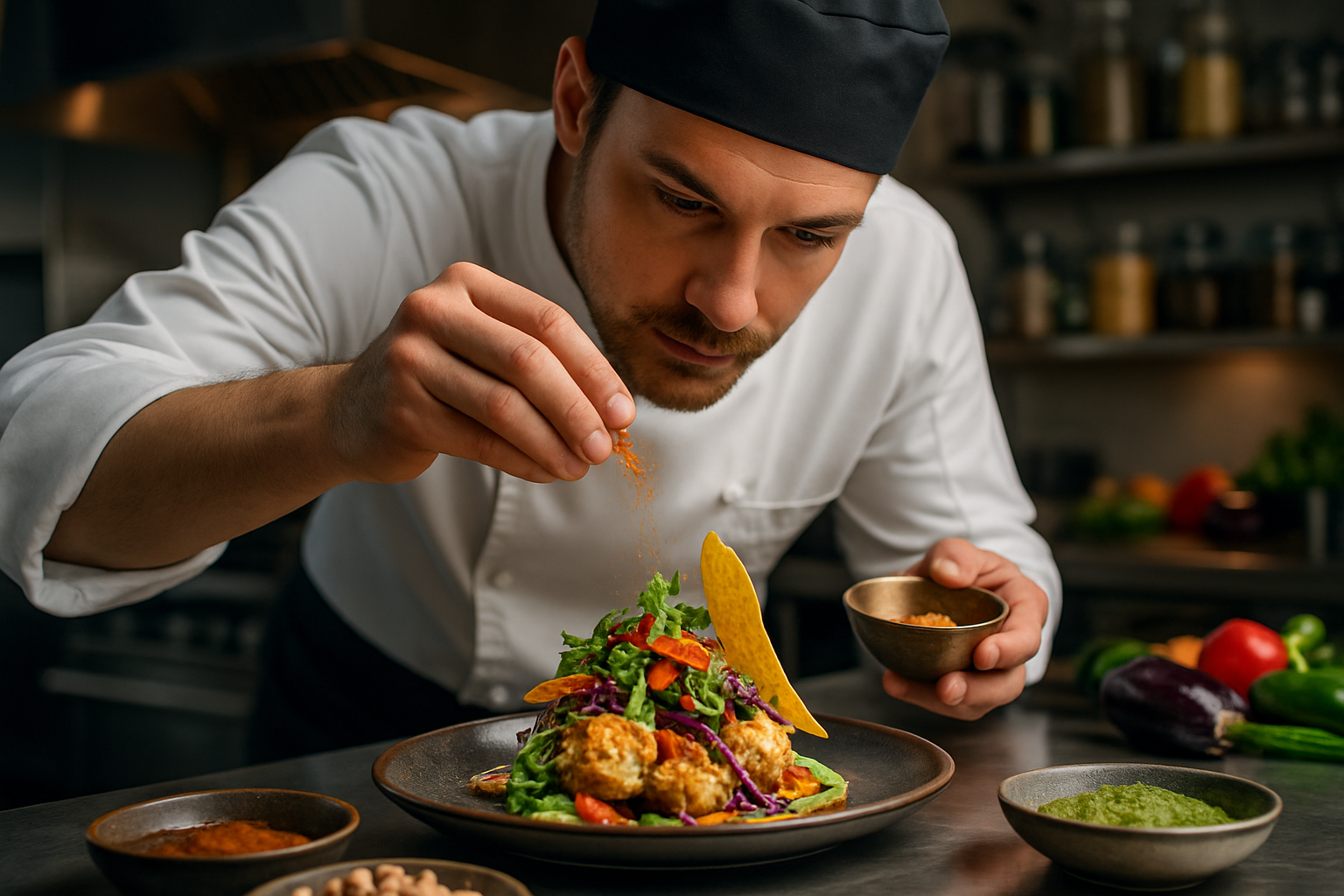Culinary Alchemy: Transforming Everyday Ingredients into Gourmet Delights
Unlock the secrets of culinary alchemy and elevate your cooking game. Discover how simple pantry staples can be transformed into extraordinary dishes that will wow your taste buds and impress your guests. From humble beginnings to gourmet endings, this journey through ingredient metamorphosis will change the way you approach cooking forever.

Unexpected Pairings: A New Flavor Frontier
One of the most exciting aspects of culinary alchemy is the discovery of unexpected flavor pairings. While traditional cooking often relies on tried-and-true combinations, modern gastronomy encourages experimentation. For example, the earthy sweetness of roasted beets can be beautifully complemented by the tang of blue cheese and the crunch of candied walnuts. Or consider the surprising harmony between watermelon and feta, where the juicy freshness of the fruit is balanced by the salty creaminess of the cheese. These unconventional pairings not only excite the palate but also challenge our preconceptions about what flavors work together.
Texture Transformation: From Soft to Crisp
Texture plays a crucial role in our enjoyment of food, and culinary alchemy allows us to manipulate it in fascinating ways. Take the humble chickpea, for instance. When cooked and mashed, it becomes the base for creamy hummus. But when roasted with spices, it transforms into a crunchy, protein-packed snack. Similarly, cauliflower can be steamed for a soft side dish, riced for a low-carb alternative to grains, or roasted whole for a showstopping centerpiece. By understanding how cooking methods affect texture, we can reimagine familiar ingredients and create dishes with exciting mouthfeel contrasts.
The Art of Reduction and Concentration
One of the most powerful techniques in culinary alchemy is the process of reduction and concentration. This method involves simmering liquids to evaporate water content, intensifying flavors and creating rich, complex sauces. A simple tomato sauce can be transformed into a luxurious, umami-packed spread through slow reduction. Balsamic vinegar, when reduced, becomes a syrupy glaze that adds depth to both savory and sweet dishes. Even fruits can benefit from this technique; reduced berry sauces become vibrant, concentrated toppings for desserts or savory meats.
Molecular Gastronomy: Science Meets Cuisine
At the cutting edge of culinary alchemy lies molecular gastronomy, where scientific principles are applied to food preparation. This innovative approach allows chefs to create mind-bending dishes that challenge our perceptions of food. Techniques like spherification can turn liquids into caviar-like pearls, while foams add a light, airy texture to traditionally dense foods. Even humble ingredients like carrots can be transformed into delicate, flavor-packed powders through freeze-drying. While some molecular gastronomy techniques require specialized equipment, many can be adapted for home kitchens, allowing amateur cooks to experiment with these avant-garde methods.
Useful Tips & Facts
• Blanching vegetables in salted water before roasting enhances their flavor and texture.
• Browning butter adds a nutty, complex flavor to both sweet and savory dishes.
• Infusing oils with herbs or spices is an easy way to add depth to your cooking.
• Pickling isn’t just for cucumbers - try pickling fruits for a tangy, sweet condiment.
• Dehydrating fruits intensifies their sweetness and creates chewy, healthy snacks.
• Smoking salt or sugar adds a complex, savory note to a variety of dishes.
In conclusion, culinary alchemy is about more than just cooking; it’s about seeing the potential in every ingredient and having the courage to experiment. By embracing these transformative techniques, home cooks can turn their kitchens into laboratories of flavor, creating dishes that are not only delicious but also exciting and innovative. So the next time you open your pantry, don’t just see ingredients - see possibilities. With a little imagination and the principles of culinary alchemy, you can turn even the most ordinary meals into extraordinary culinary experiences.





